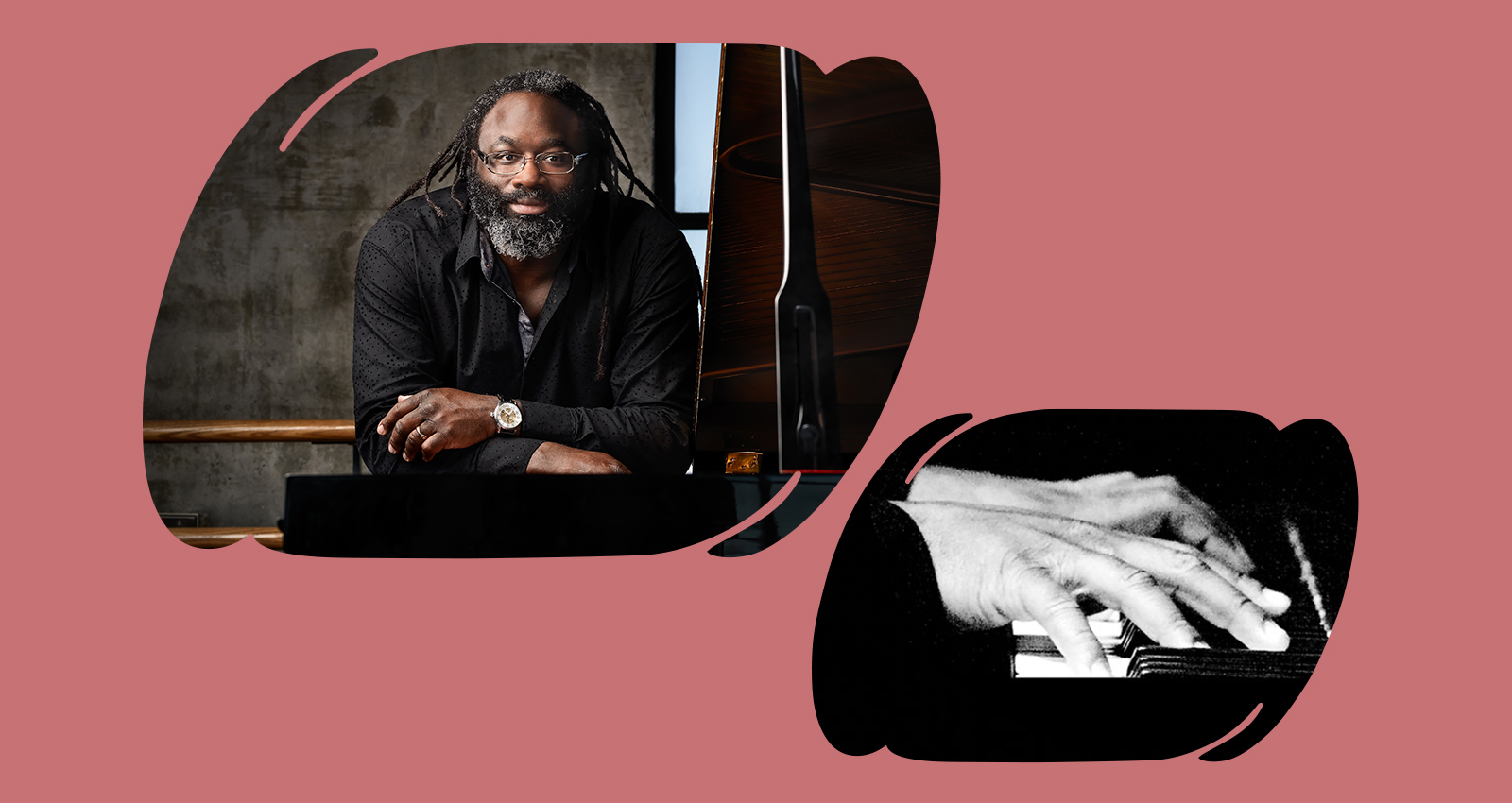
The taxonomy of contemporary classical music—new music, contemporary music, whatever you want to call it—is a thorny issue. But every month, we’ll take a look at some of the best composer-driven music to surface here on Bandcamp, that which makes room for electronic experimentation, improvisation, and powerful takes on old classics.
Awadagin Pratt
Stillpoint




Compact Disc (CD)


Most of the music covered in this column tends to draw on modern and postmodern ideas, as composers seek to create sounds that feel genuine to them while simultaneously tilling fresh musical soil. This new collection of works composed for the acclaimed pianist Awadagin Pratt—a musician of great versatility with a deep devotion to standard repertoire—was overseen by composer Judd Greenstein and writer Mark Rabideau, commissioning music with a connection to the poetry of T.S. Eliot, a favorite of the pianist. The six pieces feature his playing alongside leading new music ensembles Roomful of Teeth and A Far Cry.
The music is new, but it’s rooted in classical traditions, and it’s fascinating to hear compositional voices that routinely push forward, earnestly engaging in traditional approaches. On Jessie Montgomery’s stirring “Rounds,” the pianist is asked to improvise his own cadenza, a lost practice from the days of Beethoven and Liszt. The fiery runs of glassy piano colliding with upper register strings on Paola Prestini’s “Code” brings a wholly modern intensity to a running soloistic-ensemble dialogue until the voices of Roomful of Teeth enter with full-bodied drama. Alvin Singleton brings some of his jazz roots to his piece “Time Past, Time Future,” with left-handed gestures that recall the hammering rhythm of pianist Horace Silver. Tyshawn Sorey’s “Untitled Composition for Piano and Eight Voices” is deliciously stark, aligning brooding piano chords with harrowing, wordless vocal harmonies. The collection also includes works from Greenstein and Pēteris Vasks.
Sarah Saviet
Spun


Following last year’s epic version of Bryn Harrison’s A Coiled Form, a staggering essay on the leanest of musical materials, Berlin-based violinist Sarah Saviet returns with an equally satisfying and challenging collection of new work. Again, she pushes herself to the brink, a liminal area where technique flirts with the impossible. That quality reaches its apotheosis with Evan Johnson’s “Wolke über Bäumen,” a piece requiring gut strings rather than the far more stable and common steel and nylon, as well as a baroque bow, which presents a second set of variables to the performer given its shorter length and greater sensitivity. But the real challenge comes in the composer’s deployment of scordatura, in which the performer must ever-s0-slightly change the tuning 32 times during the course of its 16 minutes, adjusting one of the tuning pegs just so when instructed by the score; the crack of the gesture is often audible. It’s impossible for a human to get the tuning right without testing it, so Saviet must adjust on the fly, and that sort of quicksilver instinct marks her interpretations of all five works, whether they use odd tunings or not.
As Saviet worked with Harrison to develop and expand A Coiled Form, she’s undergone a similar process over a two-year period with Arne Gieshoff on the title piece, a process that seems to be becoming more common in contemporary music. The album is rounded out by equally riveting works from Lawrence Dunn, Liza Lim, and Lisa Streich.
Carl Stone
Electronic Music From 1972-2022



Vinyl Box Set

Over the last seven years the Unseen Worlds label has almost single-handedly introduced composer Carl Stone to a new generation, one that might take his innovations for granted otherwise. This three-LP set is the third and final release in a series of titles collecting often-impossibly rare earlier material with new work, this one corresponding with Stone’s 70th birthday. It begins with some of his first works as a student at CalArts in 1972 with the processed and spoken poetry of Stefan Weisser (aka Z’EV), using tape and analog synthesizer, and ends up with a trio of brand new works achieved using self-designed software for Max/MSP.
Those first pieces seem much tamer than they might have 51 years ago, but they lay out the basic template he’s used ever since, reconfiguring our sense of time by mutating sample-based material in infinite ways. The set jumps forward 15 years for his piece “Vim,” which sounds like a tense headline news jingle implanted with a single chopped-up phrase from the Beach Boys hit “Fun, Fun, Fun,” which he smears and stretches into a fantasia of the group’s iconic harmonies. The 2005 piece “Morangak” is derived from songs on the Billboard Hot 100 chart, and over its length the listener slowly becomes aware of the contours of the Queen tune “Bicycle Race,” reinforcing Stone’s gift for letting us experience time and pop detritus in new ways. The final three tracks are from 2022, indicating that his current works are no less rigorous or revealing.
Yvonne Lam
Watch Over Us
On her first solo album Yvonne Lam—known best for her long stint in Chicago’s eighth blackbird—tackles six works by living female composers, all but one of which includes fixed media elements. In her liner note essay she explains how over time those pre-recorded elements began to feel like she was collaborating directly with the composer in performance, and, indeed, she inhabits each sound world with organic ease. The album was named for the piece written by Nathalie Joachim—the masterful flutist who was her bandmate in eighth blackbird for years—which gets its debut with this recording. The music was composed as part of a score to a film that was never finished, but in 2019 Lam premiered the piece, and four years later she reveals a deep affinity for it; it’s built around a mysterious electronic part distinguished by a repeating percussive sample and disembodied vocal cries.
Several pieces, including Missy Mazzoli’s “Tooth and Nail,” originally written for Nadia Sirota, use synthetic patterns that trace out structures, but Lam’s crystalline articulation and precise phrasing inhabit those landscapes beautifully, celebrating the melodic generosity of all six works. Katherine Balch’s simple “Apartment Sounds” precisely uses the ticking of a clock, porch chimes, and ambient noises from an open window to organize the violin part, which shapes the melody using only scratch tones and spry pizzicato. There’s no electronic part in Anna Clyne’s “Rest These Hands,” but Lam reads a brief poem written by the composer’s mother, her intonation imparting a world-weary wisdom.
Dedalus Ensemble
Performing Brian Eno: Discreet Music / Music for Airports / Thursday Afternoon


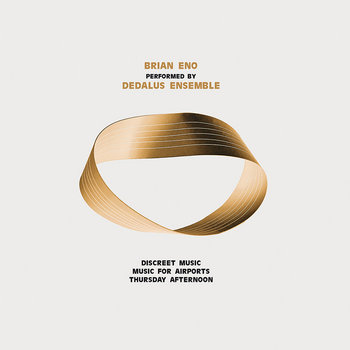
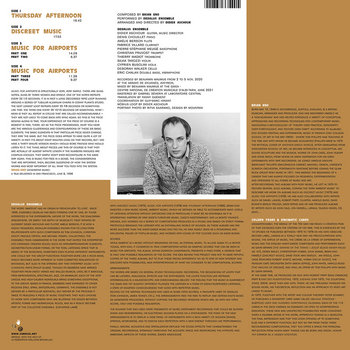
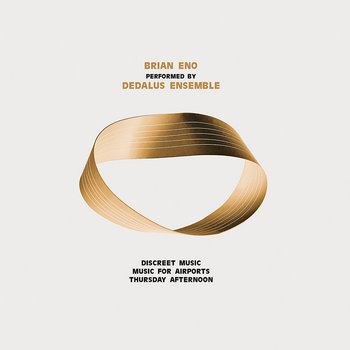

Compact Disc (CD), 2 x Vinyl LP




The Parisian group Dedalus Ensemble has carved out a sterling reputation for its commitment in working with some of today’s most radical composers, forging tight connections with figures like Éliane Radigue and Pascale Criton in which its collective mentality is essential. They explore a much different strain of Minimalism on this astonishing new project, tackling some of Brian Eno’s most iconic early ambient works. New York’s Bang on a Can All-Stars famously arranged and recorded his 1978 masterpiece Music for Airports, transforming the original cyclical piece for chamber ensemble, and now Dedalus steps forward with an even more convincing interpretation, enhanced by adaptations of two other Eno classics, his 1975 gem Discreet Music and the 1985 work Thursday Afternoon.
All of these performances subscribe to Eno’s original goal, updating Erik Satie’s “furniture music” concept to create shimmering sounds that “must be able to accommodate many levels of listening attention without enforcing one in particular; it must be as ignorable as it is interesting,” as Eno first described it in the liner notes for Music for Airports. I can’t say for sure if Dedalus succeeds in making ignorable music, as every time I’ve played this I’ve been pulled in by its measured elegance and crystalline beauty, in which ensemble leader Didier Aschour’s electric guitar and pianist Denis Chouillet articulate the main movement amid a luminescent wash of strings and brass, its diaphanous weightlessness belying the slow-moving lyric splendor. They do largely drop out on the gauzy account of Discreet Music.
Natasha Barrett
Reconfiguring the Landscape
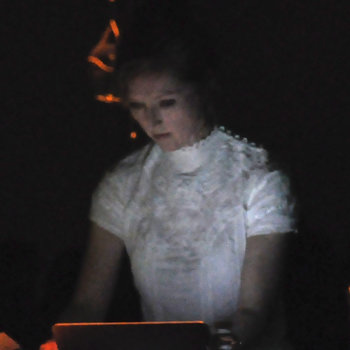
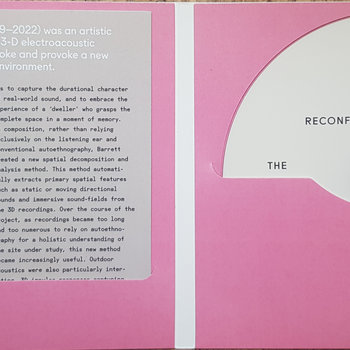

Compact Disc (CD)

This new collection from Norway-based composer and sound artist Natasha Barrett was derived from a series of outdoor sound installations experimenting with new 3-D technology. These pieces aim to heighten an awareness of how sound surrounds us, changing depending on one’s position. Naturally, a stereo recording can’t help but lose most of that spatialized experience, but her sharp ears and compositional logic still allow this flattened version of the works to remain compelling.
Most of the sound sources are drawn from rather quotidian locations and activities, whether Barrett is using field recordings made in Venice, Italy or random sounds recorded in a courtyard alongside a medieval castle in Oslo, Norway. Barrett moves elements around within each piece, but she doesn’t engage in heavy processing. In most cases, it’s not difficult to figure out what we’re hearing, whether it’s water lapping at the edges of canals, piles of footsteps stacked upon each other, children playing, or church bells pealing. Each of the five works achieve her goal of transplanting the listener to the location where the sounds were collected, offering a carousel of individual and collaged ambience and activity. Barrett sometimes applies an extra, loose narrative drift to her pieces, as with “Remote Sensing on the Beach,” where seasonal recordings made along a Norwegian fjord take us from the shore into the sea, quite literally. Here, she uses the sonification of 3D topographical maps tracing the descent of coastal hills straight into water; hydrophones capture a submerged world of sound, including the muted murmur of sounds from the shore and the crackle of emerging ice during winter.
Arnold Dreyblatt
Resolve
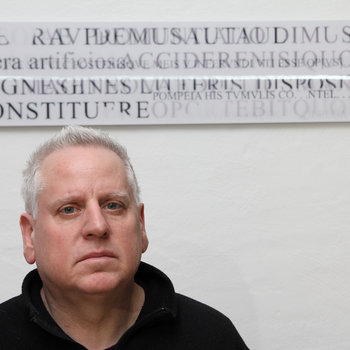


Vinyl LP

Resolve is the first new album billed to Arnold Dreyblatt’s Orchestra of Excited Strings since 2002, picking up on his jacked-up take on just intonation. It’s all built around his customized bass, which is fitted with piano strings to cram in 20 tones per octave. As usual Dreyblatt strikes his instrument with a bow, unleashing a harmonically dense array of twangy, sustained tones. Upon that foundation three fellow travelers sculpt complementary clouds of resonant overtones. A series of computer-controlled rhythms programmed by Konrad Sprenger (aka Jürg Hiller) alternate the vibe from track to track, from the almost staccato thrum of the opening track “Container” to the galloping groove beneath “Shuffle Effect.”
Sprenger and Joachim Schülz unleash ringing, clanging tones that dance within Dreyblatt’s hovering, striated drone, a kind of jagged jigsaw assortment of razor-sharp counterpoint. Third guitarist Oren Ambarchi adds additional motion on the first three pieces, but on the side-long closer “Auditoria,” he forges a more familiar slab of vibrato-saturated tones fueled by a Lesley speaker. The piece is a hydroplaning churn of glistening textures dominated by Dreyblatt’s arco playing, which produces a bracing upper register timbre that beautifully sets off the various tendrils of ringing sound. More than eight minutes in he begins thwacking the bass again, setting the proceedings off on another rhythmic journey.
Thomas Giles & Cole Blouin
Mundiglossia
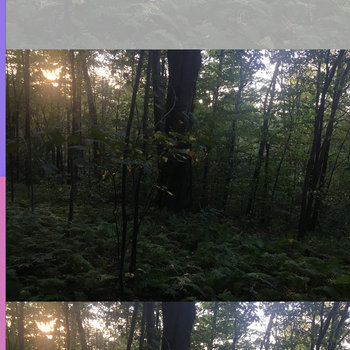

With this epic solo saxophone composition Cole Blouin has woven a veritable catalog of extended techniques into a work of steadily increasing complexity and intensity, offering an important new addition to a still-too-scant saxophone literature in contemporary classical music. Soprano saxophonist Thomas Giles articulates an assortment of building blocks at the outset, moving patiently through a variety of motifs separated by gaps of silence. Using a spiral structure, the piece evolves and expands over its exquisite first 30 minutes.
It’s impossible to miss the influence of Evan Parker, particularly in the rigorous use of circular breathing and spectral multiphonics, but Blouin’s score requires that Giles keep moving through different approaches, whether upper register glissando, sounds shaded by static from a radio, or vibrato-soaked flurries. As the work proceeds these various ideas accrue depth, volume, and aggression. It’s as if Giles opens the piece testing out an obstacle course, only to begin racing through it at greater and greater speeds, taking wider arcs as it accelerates. But velocity doesn’t diminish the precision here, as the saxophonist nails the various details with unflinching exactitude. The final 10 minutes of Mundiglossia move away from the outwardly radiating structure and toward contemplation, as Giles seems to look back upon and reflect on the sonic edifice he’s just constructed.
Abigail Toll
Matrices of Vision



Compact Disc (CD)

Berlin-based sound artist Abigail Toll developed the graphic score behind Matrices of Vision while she was studying electroacoustic composition in Stockholm, translating data on higher education trends in Sweden collected over seven decades. Honestly, I have no clue on how that process unfolded, but I’ve been utterly beguiled by the performance of that score, an extended line voiced with subtle harmonic gradations by an ensemble featuring the composer’s own flute, alongside cellist Lucy Railton, singer Evelyn Saylor, and quartertone bass flutist Rebecca Lane, who helped Toll develop the sonification of the source data.
Over the course of 40 exquisite moments the four lines levitate and collide around the tuning, in the process emitting a mesmerizing fog of acoustical beating and attractively wobbly glissando as if the harmonic series is deliberately pushed and pulled. The four voices are in constant flux as they trace a single line, a riveting journey that feels deliciously human in its fine-grained detail. On the surface not much of anything happens apart from microscopic ascent and descent, but within this collective sound lies a universe of action.
Harley Gaber
Ludus Primus


The latest entry in a recent reissue program overseen by composer and trumpeter Nate Wooley, Ludus Primus features the music of Harley Gaber, a peculiar figure in American experimental music who created a handful of underrecognized long-form works beginning with his consensus masterwork The Winds Rise in the North (1976). Though Ludus Primus was originally released in 1972, it was actually composed back in 1966, when Gaber was a 23-year old student. One can deduce serialist concerns in the piece for two flutes and vibraphone, but the composer approaches the music like an object considered from endlessly shifting perspectives, with gestures seemingly reconfigured in three-way interactions and solo statements that hang in the air.
“Kata,” a bonus track for solo violin from 1969 performed by Linda Cummiskey, is even more stark, a series of strident gestures marked by astringency, abrupt slashing lines, and guttural scratches, often situated within generous gaps of silence. It’s a work of stubborn focus, examining sound in a genuinely fresh context that sounds no less vital more than five decades later. The reissue features poignant liner notes from composer/historian Ned Sublette, an old friend of Gaber, that details his bizarre career arc, which included a long-stint at a tennis pro before he committed suicide following a long illness, in 2010. It also includes a newly commissioned work from Ka Baird, a dazzling excursion into spitting electronic patterns and high velocity pulsations that reveals a similar attention to detail as Gaber’s purely acoustic work.







